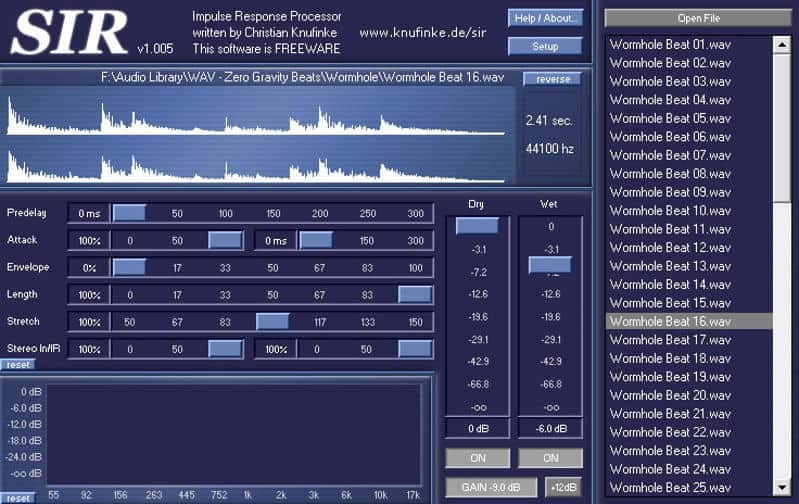
Bounce the signal going through your reverb unit. Be sure to set the bounce region to be long enough to keep the reverb tail. I left about 2 seconds for the church hall.Set the reverb unit to 100% wet so it will be entirely outputting a reverb signal. I also recommend turning the volume down to about -8 to allow headroom.Now load the SineSweep into your DAW of choice. Put the reverb unit you want to sample into the first Plug-in Insert. I used a Hall Church setting that is in RoomVerb from Cubase 5. Any reverb unit will work.Run Voxengo DeConvolver. Click the button at the bottom that says Test Tone Gen.Once you have the necessary components you can follow these steps to sample a reverb unit. Voxengo DeConvolver - This program is free to try and awesome. It can generate your sine sweep impulses and DeConvolve sampled spaces so you can put the IRs into your Convolution Reverb Unit.DeConvolver to decode the recorded signal.I”ll be using REVerence which comes free with Cubase 5.DAW and Convolution Reverb unit (Obviously).List of gear you need to sample a Reverb unit.  To do this you only need a few things. Really, it is a pretty simple thing to do. Let’s get down to business!  By doing this you can demystify convolution reverb sampling and have a better understanding of how it all works before wasting a lot of time sampling real spaces.


 I’m aware that convolution reverbs take WAY more CPU than your average reverb unit, but I do think it’s important to follow this guide to really get the process down. Tutorial: How to sample your Reverb Units to use them in Convolution Reverbs.īefore you haul all of your gear out into the world and attempt to sample real spaces, it is worthwhile to make a few Impulses of reverbs you have in your studio.


 0 kommentar(er)
0 kommentar(er)
